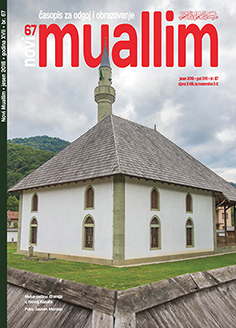KAKO SU KOMUNISTI KORISTILI UČITELJSTVO ZA PROVOĐENJE SVOJE POLITIKE (1945-1951)
DOI:
https://doi.org/10.26340/muallim.v17i67.366Ključne riječi:
Osnovna škola, Ministarstvo prosvjete NR BiH, učitelji, raspoređivanje učitelja, pedagoški seminariSažetak
UDK 371.213(497.6)"1945/1951"(091)
U periodu nakon Drugog svjetskog rata, u burnom vremenu bosanskohercegovačke historije u kojem su se dogodile velike društvene promjene, prosvjetni radnici a naročito učitelji i učiteljice su odigrali, ne samo kulturnoprosvjetnu, nego i izuzetno važnu društveno političku ulogu u obrazovanju i stvaranju odanih socijalističkih podanika vladajuće Komunističke partije Jugoslavije. Učitelji su bili čvrst oslonac socijalističke vlasti, jer su unosili novi duh u nastavi i odgoju mladih naraštaja te uticali na stanovnike lokalne zajednice da se društveno aktiviraju. U prilogu su, na temelju izvorne do sada slabo korištene, arhivske građe opisane sljedeće teme: kakav je bio društveno politički značaj osnovnih školstva i učiteljstva za izgradnju novog socijalističkog građanina; kakav je bio društveni i ekonomski položaj učiteljskog kadra u procjepu između velikih političkih zahtijeva, teških radnih uvjeta i skromnog nagrađivanja te na koji su način predstavnici novog državnog prosvjetnog aparata “trenirali” učitelje i učiteljice za ostvarivanje nove prosvjetne politike. Opisana su dva načina, jedan koji je javno proklamiran i obznanjen u zvaničnim dokumentima Ministarstva prosvjete NR BiH i drugi skriveni način koji nije javno obznanjen, ali se iz dostupnih arhivskih dokumenata mogu “naslutiti” njegovi ciljevi.
Downloads
Objavljeno
How to Cite
Broj časopisa
Rubrika
License
Naknada:
a. Časopis ne naplaćuje naknadu za obradu članaka (APC) i naknadu za podnošenje članaka.
Autori koji objavljuju u ovom časopisu pristaju na sljedeće uvijete:
- Autori zadržavaju autorska prava i pružaju časopisu pravo prvog objavljivanja, pri čemu će rad jednu godinu po objavljivanju biti podložan licenci Creative Commons imenovanje koja omogućuje drugima da dijele rad uz uvijet navođenja autorstva i izvornog objavljivanja u ovom časopisu.
- Autori mogu izraditi zasebne, ugovorne aranžmane za ne-ekskluzivnu distribuciju rada objavljenog u časopisu (npr. postavljanje u institucionalni repozitorij ili objavljivanje u knjizi), uz navođenje da je rad izvorno objavljen u ovom časopisu.


